Idiom Worksheets & Tests
Students are often required to identify idioms on state tests, but what are idioms? It's hard to define them. This is because idioms are made from other figurative language techniques (like simile, metaphor, or hyperbole).
Idioms are different from other figurative language instances because people use idioms A LOT. Idioms are cliched figurative expressions. They have become part of the language as it is used. They are so common that many native speakers are unaware that they are using figurative language. Let's look at an example:
This figurative expressions is a metaphor. It compares the subject to a steam engine. But it's also an idiom. That's because the metaphor comparing steam to a person's energy is so common that it has become idiomatic. Native speakers don't have to bother to decode the metaphor. They know instantly what it means. Steam has become an idiomatic metaphor.
Many idioms are dated expressions. They may refer to technology that is less utilized today, like steam. This can make idioms challenging for young students to understand. Most of today's students do not understand the origins of the phrase "hang up the phone" yet alone the idiom "bought the farm." It is good to expose students to a wide range of idioms. This page contains tests, worksheets, and interactive activities to help your students master idioms.
Idiom Tests
Here are some idiom tests. Each test has 15 questions. Each question has a bolded idiom in a context-rich sentence. Students choose the best definition for each.
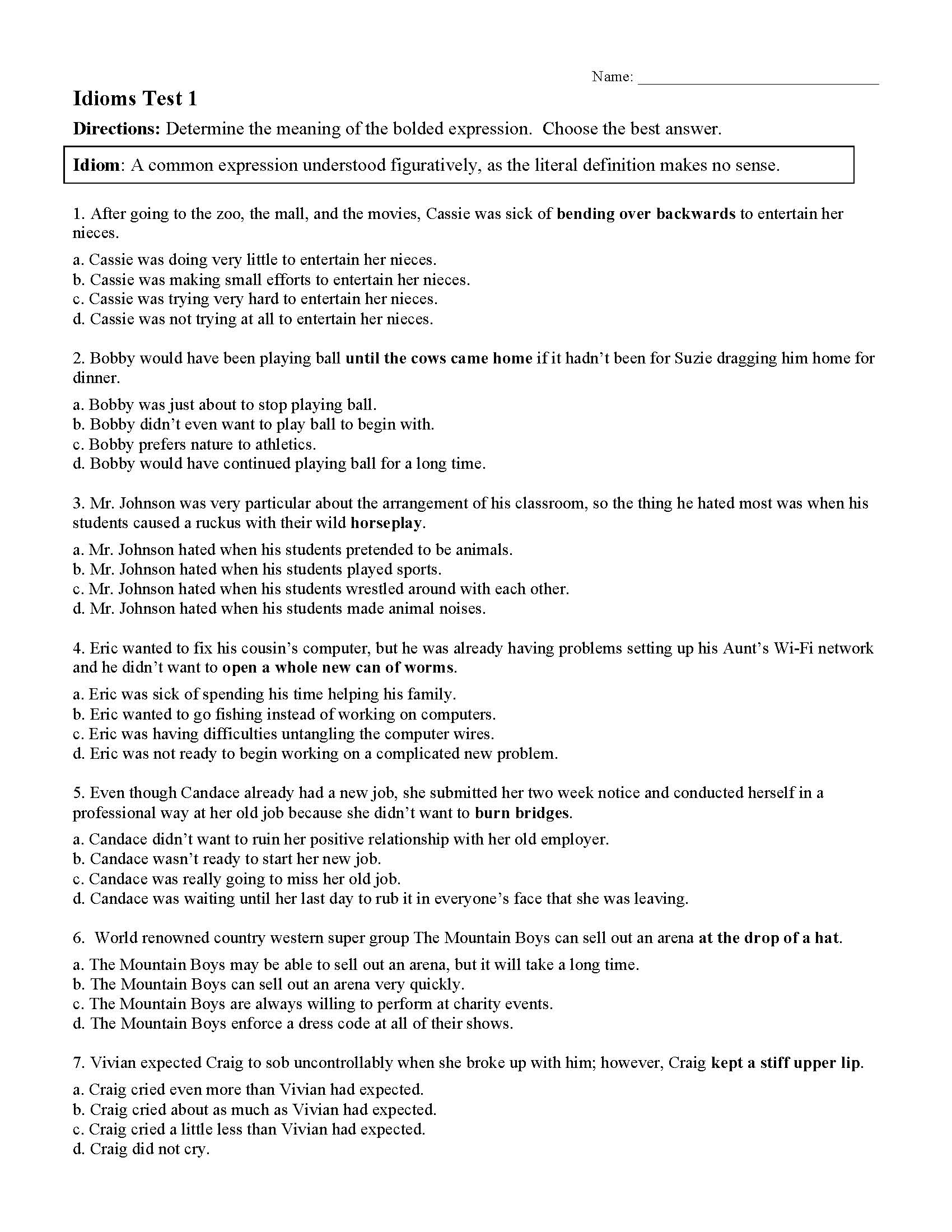
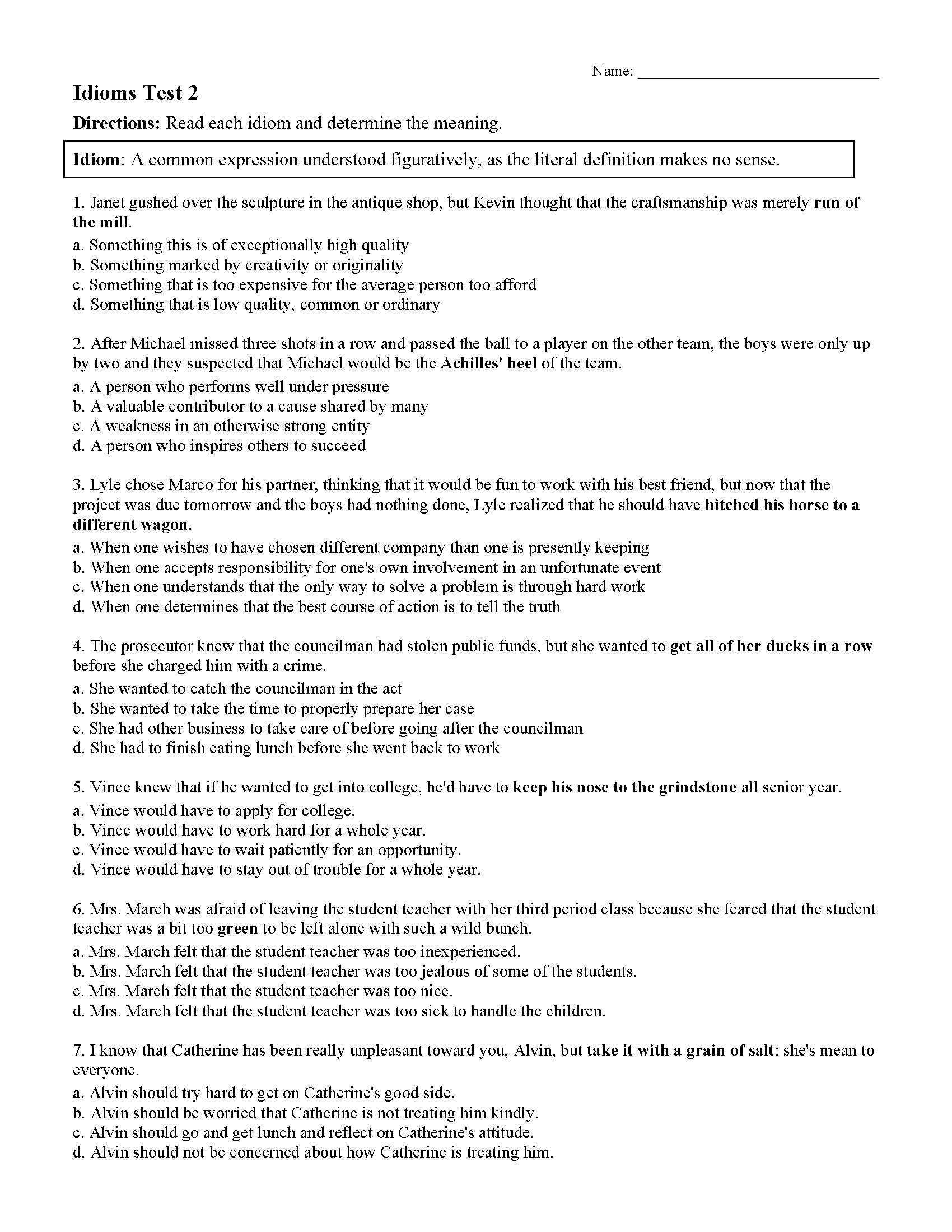
Idiom Worksheets
Here are some idiom worksheets. The paper and printable versions of these worksheets are more open-ended than the idiom tests (above), which are multiple-choice. The online versions of these worksheets are pretty much the same.
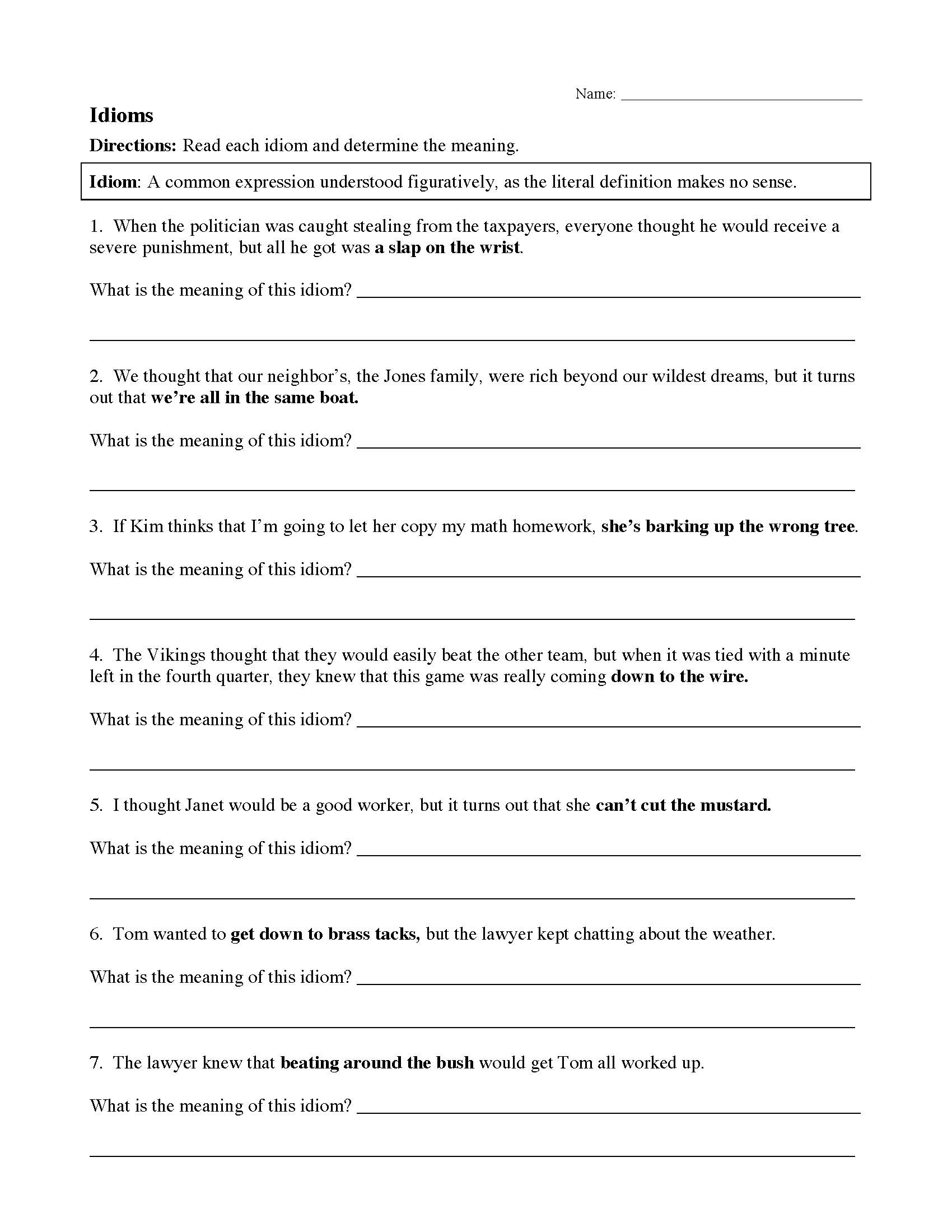
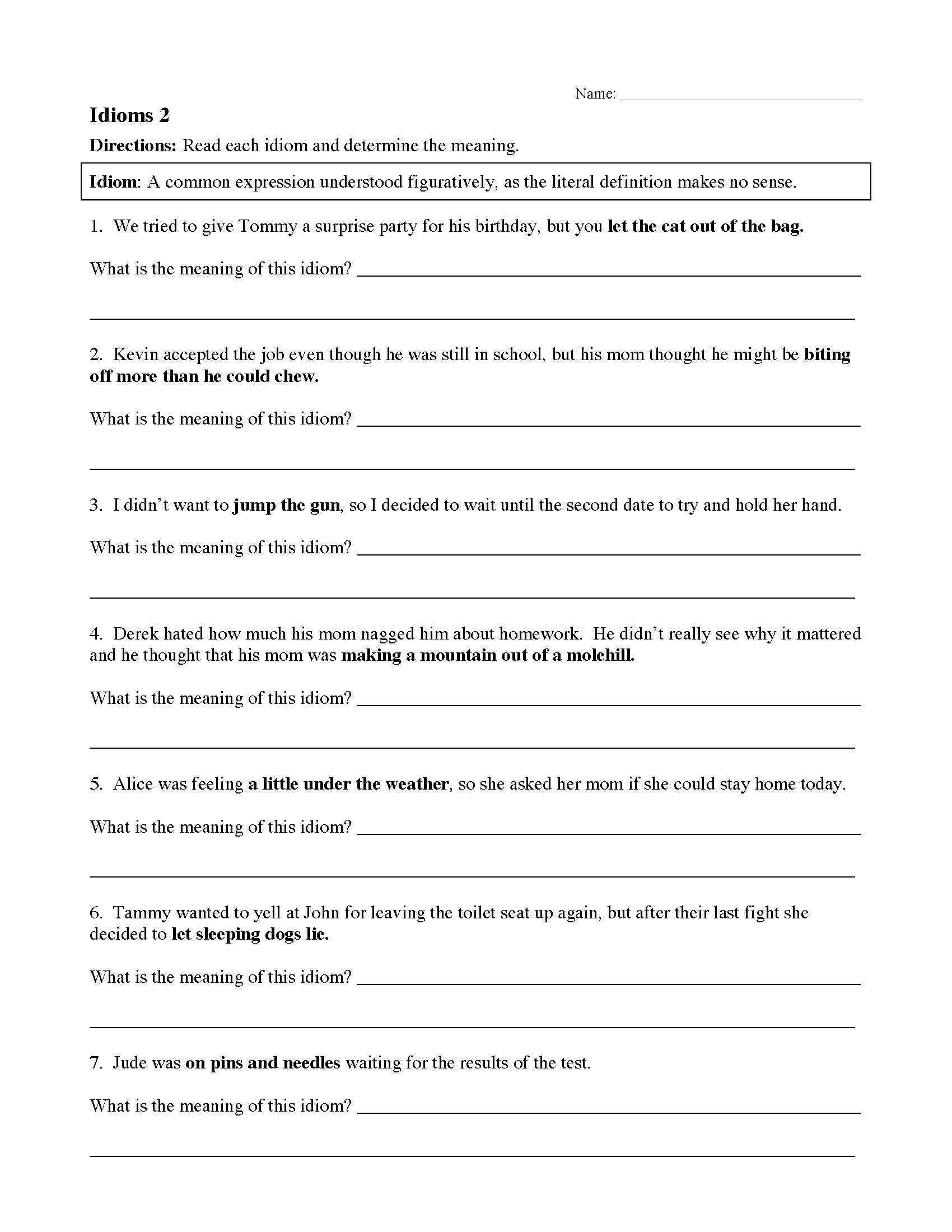
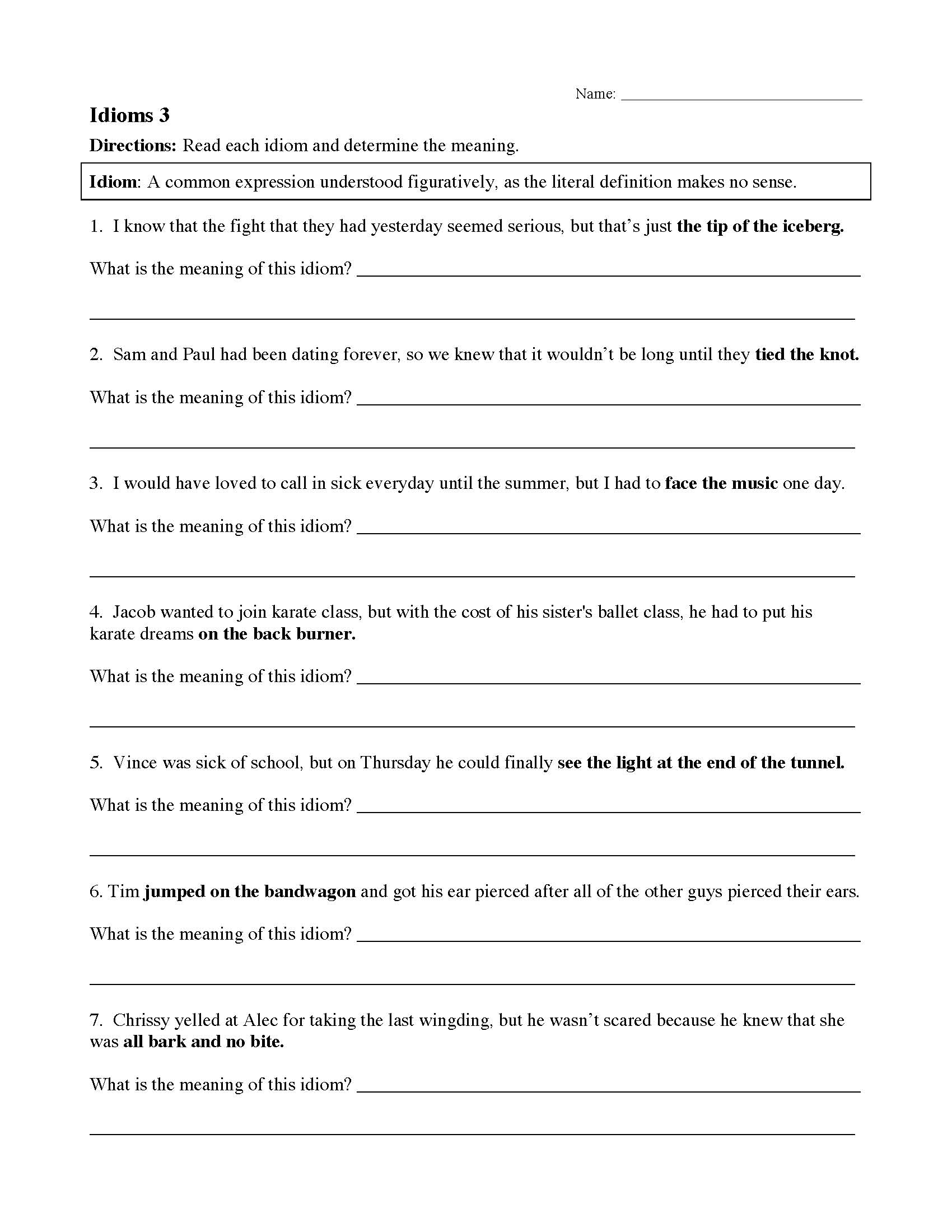
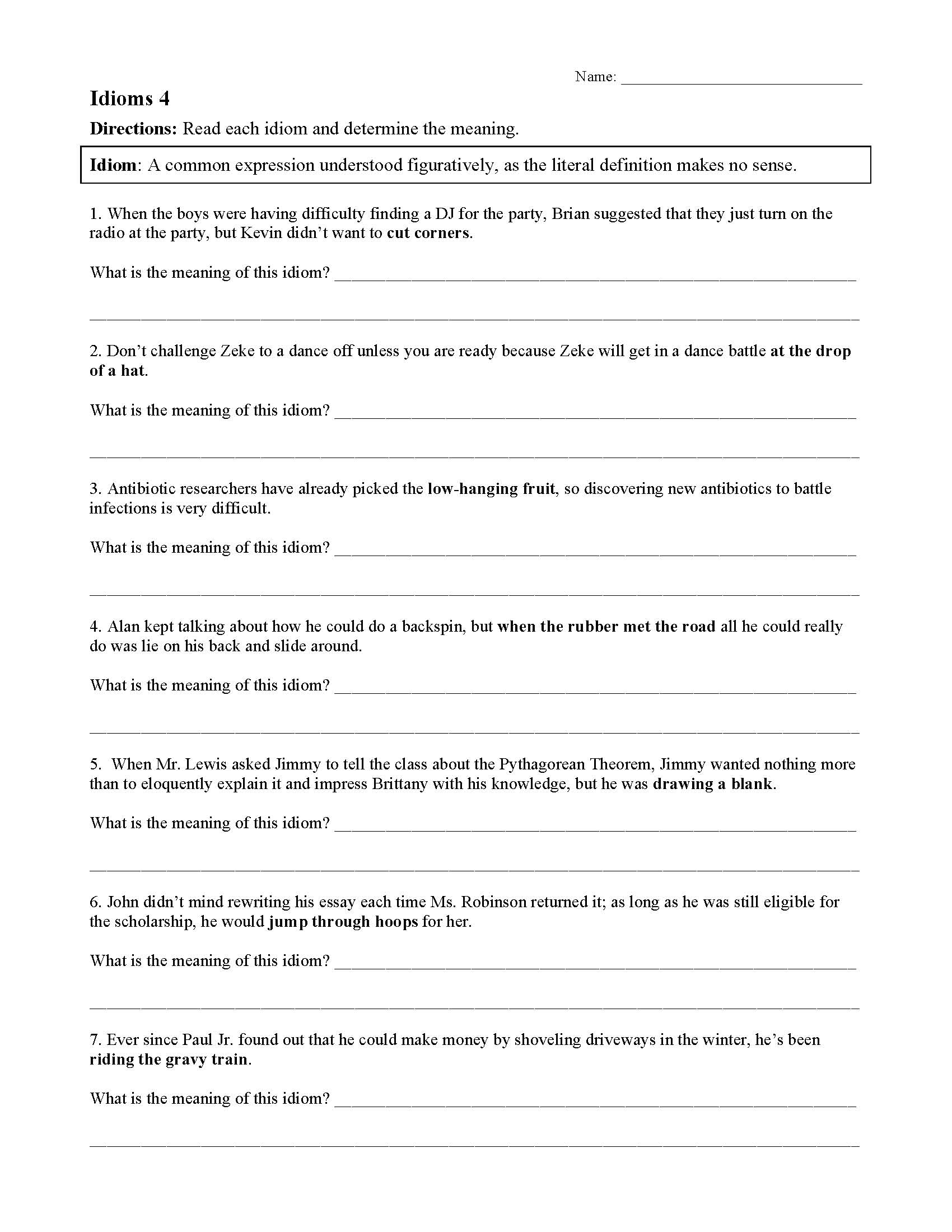
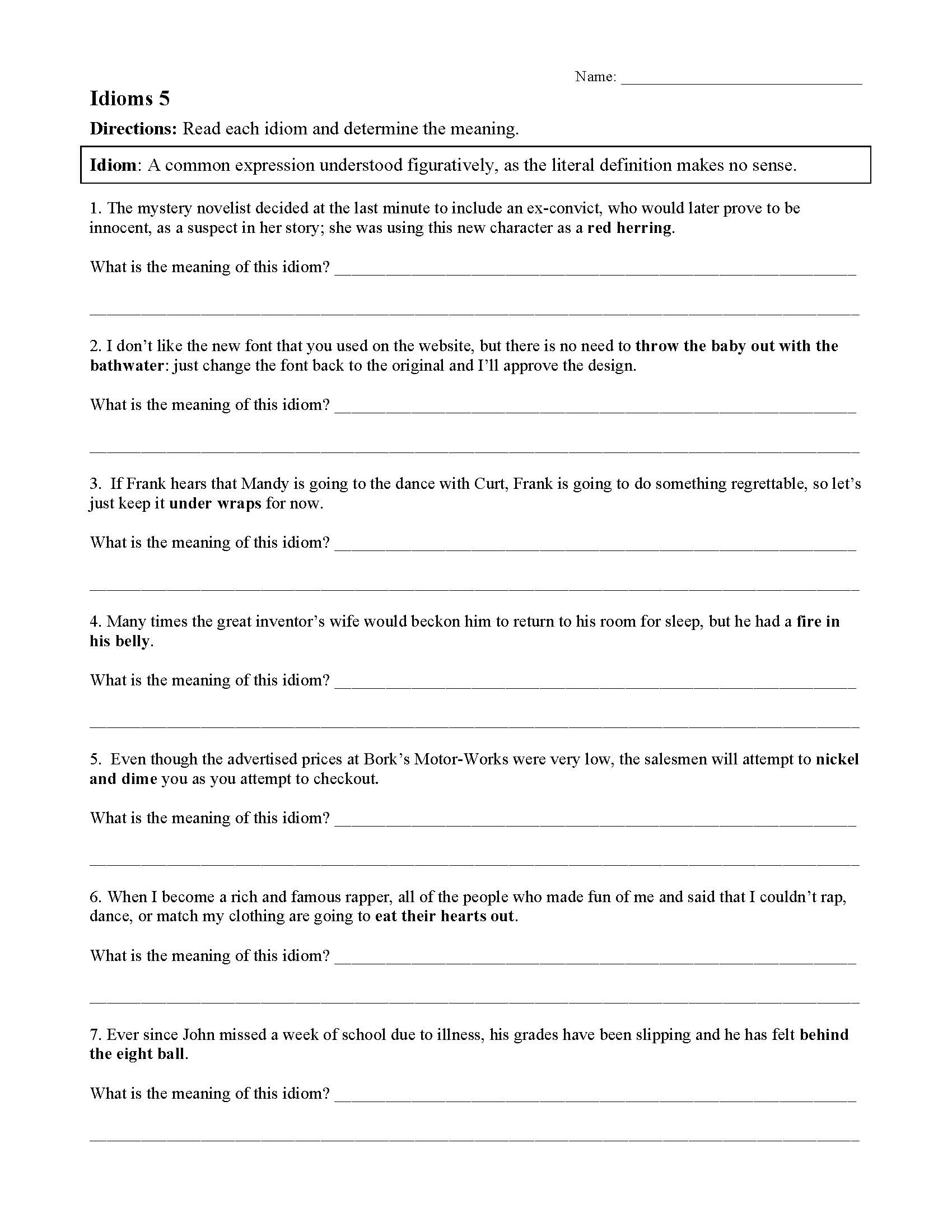
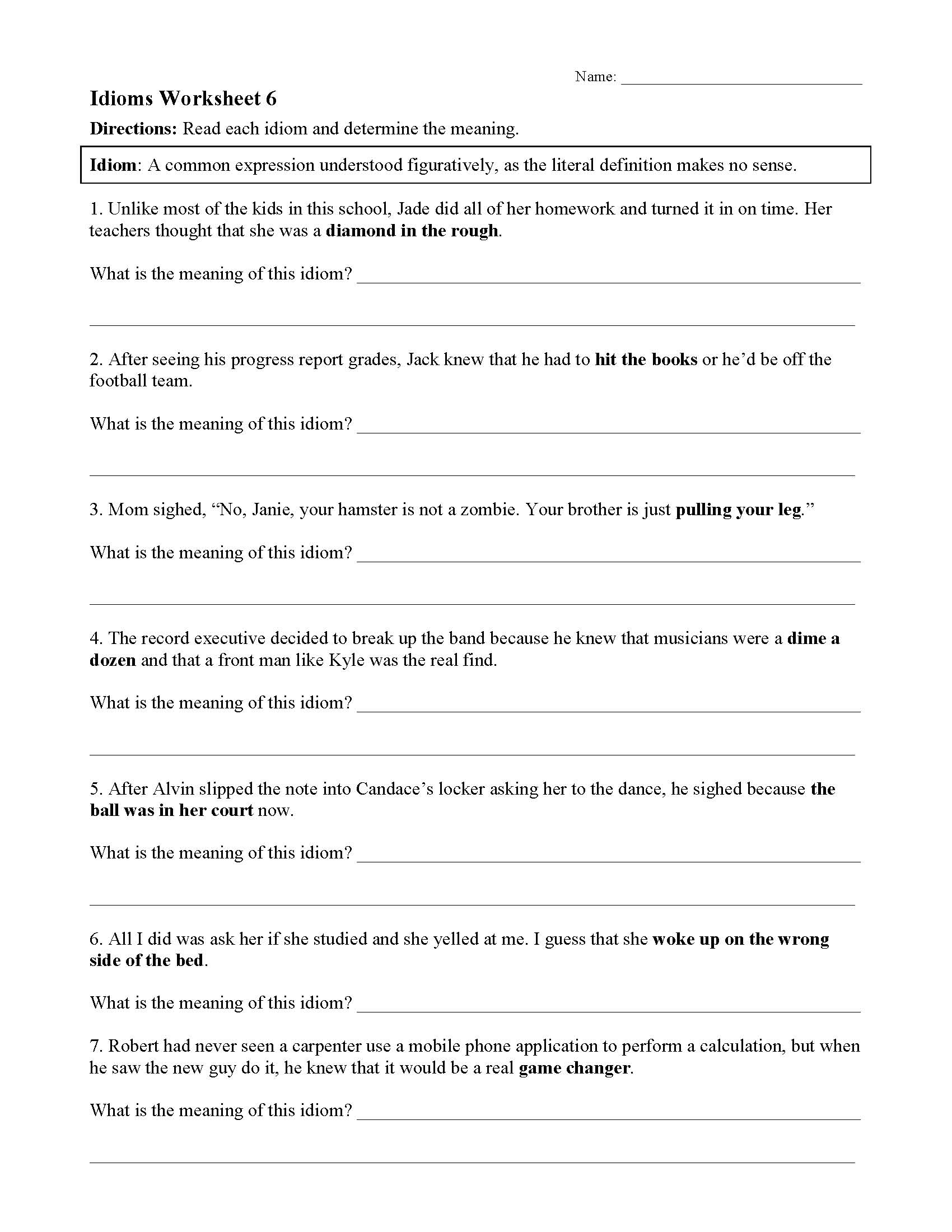
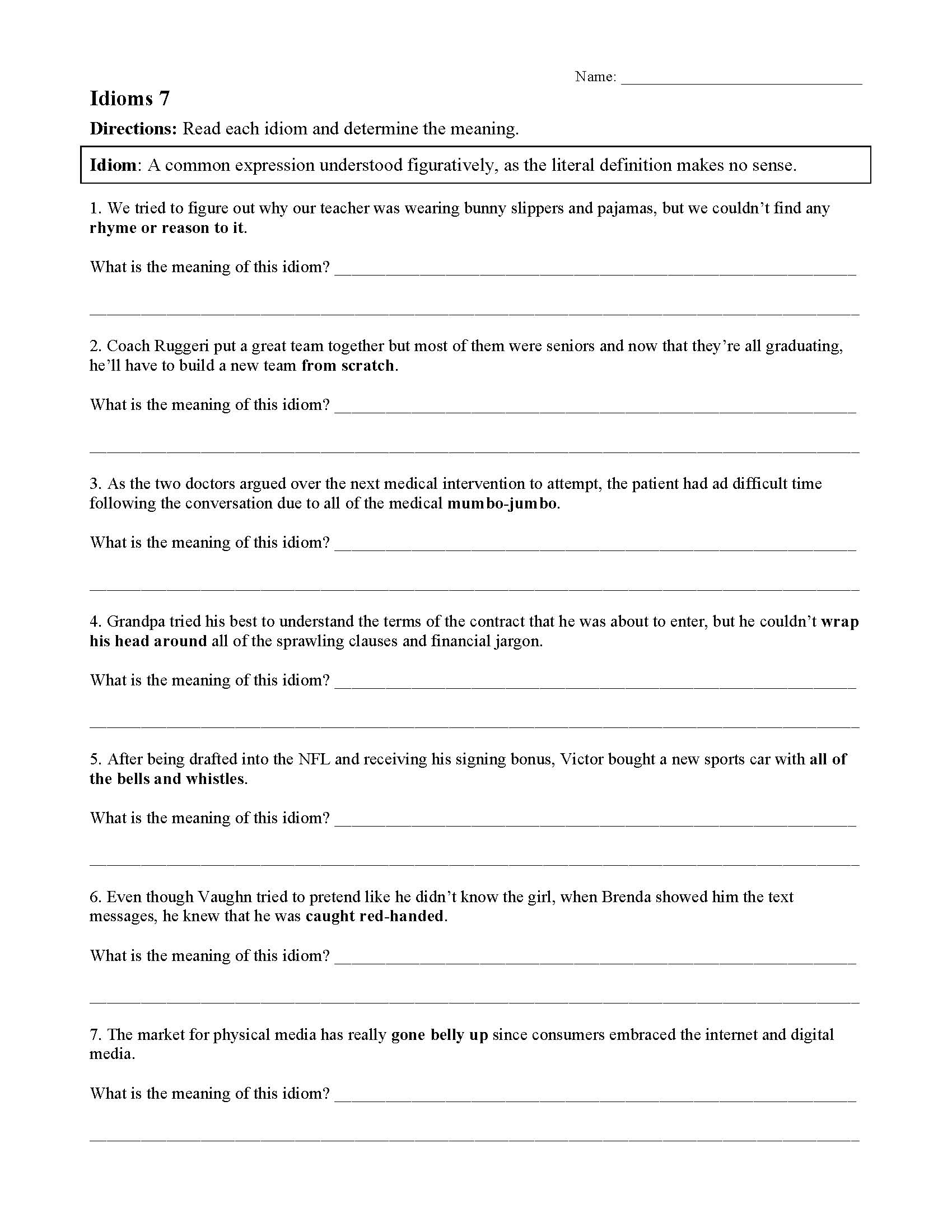

Idioms
Common Core State Standards
RL.2.4 - Describe how words and phrases (e.g., regular beats, alliteration, rhymes, repeated lines) supply rhythm and meaning in a story, poem, or song.
RL.3.4 - Determine the meaning of words and phrases as they are used in a text, distinguishing literal from nonliteral language.
RL.4.4 - Determine the meaning of words and phrases as they are used in a text, including those that allude to significant characters found in mythology (e.g., Herculean).
RL.5.4 - Determine the meaning of words and phrases as they are used in a text, including figurative language such as metaphors and similes.
RL.6.4 - Determine the meaning of words and phrases as they are used in a text, including figurative and connotative meanings; analyze the impact of a specific word choice on meaning and tone.
RL.7.4 - Determine the meaning of words and phrases as they are used in a text, including figurative and connotative meanings; analyze the impact of rhymes and other repetitions of sounds (e.g., alliteration) on a specific verse or stanza of a poem or section of a story or drama.
RL.8.4 - Determine the meaning of words and phrases as they are used in a text, including figurative and connotative meanings; analyze the impact of specific word choices on meaning and tone, including analogies or allusions to other texts.
RL.9-10.4 - Determine the meaning of words and phrases as they are used in the text, including figurative and connotative meanings; analyze the cumulative impact of specific word choices on meaning and tone (e.g., how the language evokes a sense of time and place; how it sets a formal or informal tone).
RL.11-12.4 - Determine the meaning of words and phrases as they are used in the text, including figurative and connotative meanings; analyze the impact of specific word choices on meaning and tone, including words with multiple meanings or language that is particularly fresh, engaging, or beautiful. (Include Shakespeare as well as other authors.)
L.3.5a - Distinguish the literal and nonliteral meanings of words and phrases in context (e.g., take steps).
L.4.5 - Demonstrate understanding of figurative language, word relationships, and nuances in word meanings.
L.4.5a - Explain the meaning of simple similes and metaphors (e.g., as pretty as a picture) in context.
L.5.5a - Interpret figurative language, including similes and metaphors, in context.
L.6.5 - Demonstrate understanding of figurative language, word relationships, and nuances in word meanings.
L.6.5a - Interpret figures of speech (e.g., personification) in context.
L.7.5 - Demonstrate understanding of figurative language, word relationships, and nuances in word meanings.
L.7.5a - Interpret figures of speech (e.g., literary, biblical, and mythological allusions) in context.
L.8.5 - Demonstrate understanding of figurative language, word relationships, and nuances in word meanings.
L.8.5a - Interpret figures of speech (e.g. verbal irony, puns) in context.
L.9-10.5 - Demonstrate understanding of figurative language, word relationships, and nuances in word meanings.
L.11-12.5 - Demonstrate understanding of figurative language, word relationships, and nuances in word meanings.
L.11-12.5a - Interpret figures of speech (e.g., hyperbole, paradox) in context and analyze their role in the text.

Search here.
79 Comments
Leave a Reply
- Author's Purpose Worksheets
- Characterization Worksheets
- Conflict Worksheets
- Fact and Opinion Worksheets
- Figurative Language Activities
- Figurative Language Poems with Questions
- Genre Activities
- Irony Worksheets
- Making Predictions
- Mood Worksheets
- Nonfiction Passages and Functional Texts
- Parts of Speech Worksheets
- Poetic Devices
- Point of View Worksheets
- School Project Ideas
- Setting Worksheets
- Simile and Metaphor Worksheets
- Story Structure Worksheets
- Text Structure Worksheets
- Theme Worksheets
- Tone Worksheets
- ALL PAGES AND WORKSHEETS




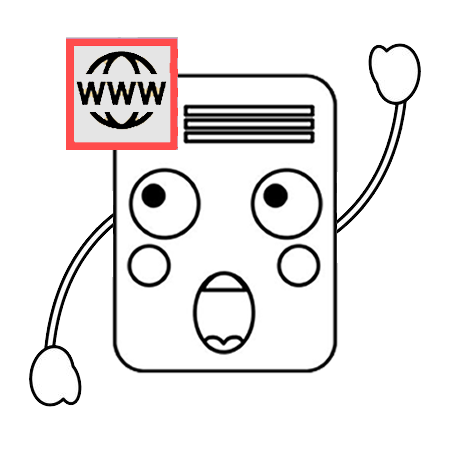


Marcus
/ April 14, 2023helps alot
tsm jay
/ October 8, 2020this is really good
marlon calebag
/ July 20, 2019what is the idoms of jump gun
Nur Ong
/ February 26, 2019Fantastic resources. Thank you so much for sharing.
George Cobbinah
/ July 6, 2018what is the meaning of the idiom,”to make a clean breast of”
Mr. Morton
/ July 11, 2018To get a fresh start.
Sini
/ June 18, 2018These are the best available on the net. Thank you so much for sharing knowledge.
Elmer Quilaton
/ December 13, 2017Thank you for sharing your God-given talent in sharing your materials for free. God bless you so much.
Mr. Morton
/ December 13, 2017Thank you kindly for the blessings.